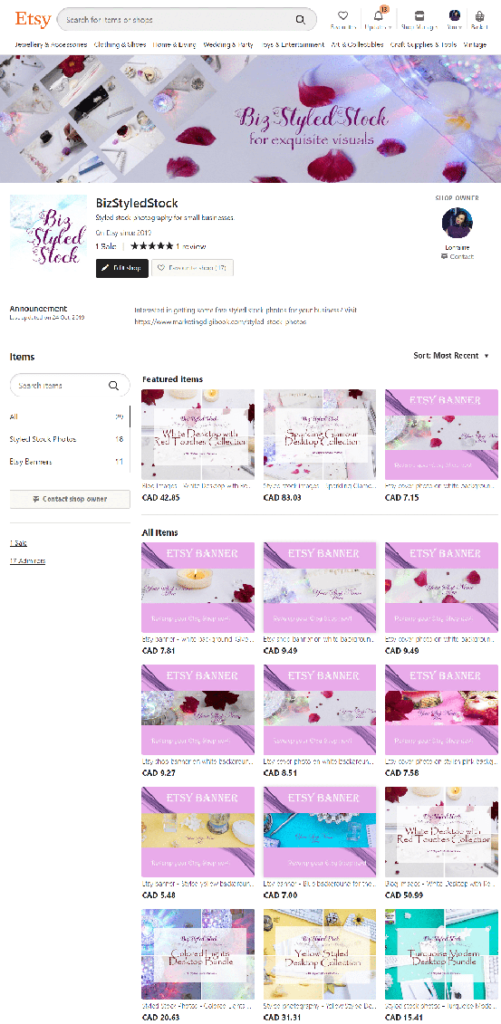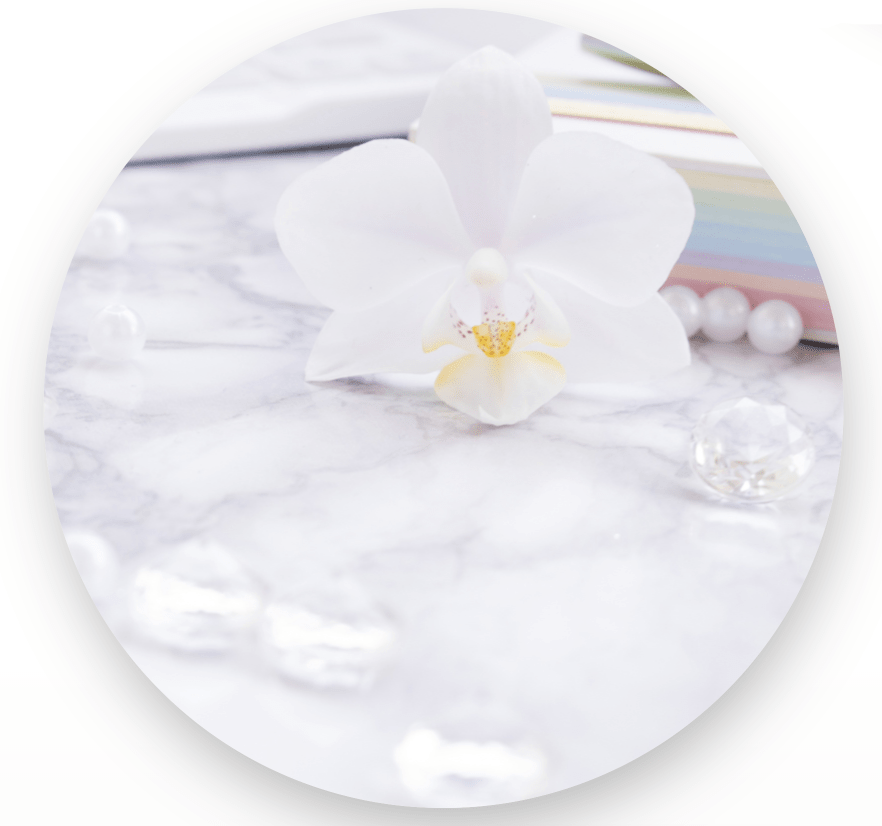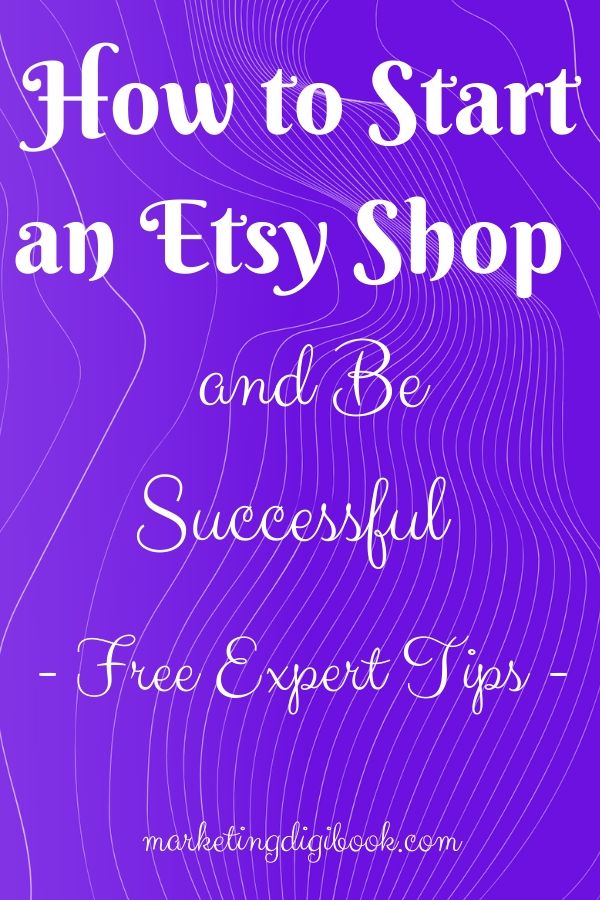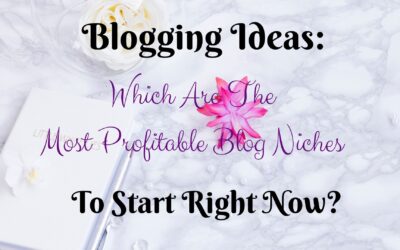In our technological era, commerce has undergone some tremendous changes. Mass production has enabled product deliveries to take place even within 48 or fewer hours irrespective of where you are. The flip side of this is the sea of sameness that can be experienced globally. People worldwide are buying the same mass-produced products, from similar outfits to tech stuff such as smartphones and even interior décor items. But where is the uniqueness? Etsy strives to bring a unique alternative since its inception. Thus, to answer anyone’s first question; “Is Etsy worth it?” You already have your answer. Plus, how to start an Etsy shop in 2023?
This beckoning need for more personalized items that carry a unique story behind them is what makes Etsy a unique marketplace. It’s a platform where people from anywhere in the world can connect to buy or sell creative unique handmade products.
Etsy sellers are a combination of professional merchants and hobbyists that sell either for professional or personal goals; it, therefore, supports a large group of designers, artists, and other similar creatives globally. It’s little wonder that Amazon launched “Amazon Handmade” to compete in this unique market.
Let’s Make Your SEO & Content Work Better for Your Business
Why Selling on Etsy Is Brilliant?
i. You Have a Large Audience
With over 35 million active buyers and still counting, Etsy continues to create a big name for itself especially since it’s serving a very particular audience. Any buyer looking for anything that is handcrafted knows that Etsy is the place to go. As an Etsy shop owner, this means that you have a great potential of getting sales purely from organic search traffic directly from the Etsy homepage, on top of any other leads you may have attracted via other marketing efforts.
ii. Access to Built-in Analytics
Etsy tracks all your metrics for you, based on your data. The metrics you’re able to see include traffic on your page, orders, the number of shop visits, the number of favorites, revenue earned by each item on your shop, etc.
Besides these, you get to see the main drivers of your overall sales. They truly want your shop to thrive.
iii. It’s Pretty Easy to Setup and Maintain an Etsy Shop
Starting an Etsy shop takes a really short time and opening a basic shop is actually free. You also have an option of getting premium features which may not really be necessary as you begin. As you’ll see below, they have listed down everything that you need to know regarding shipping, legal taxes in order for you to start on the right foot.
As you grow, Etsy keeps sending you tips and strategies on how to get better. For instance, they automatically renew your listing after you sell an item, so you don’t have to do it all over again if you have more inventory.
iv. Engage Customers
On Etsy, you have the flexibility to engage your visitors. Etsy allows other sellers (3rd parties) to leave their social media handles or coupons and enables you to get their emails so you can follow up personally.
v. Your Own Shipping Policies
As an Etsy shop owner, you’re in charge of your listings, so this allows you to come up with your own shipping, return or exchange policies. This is mainly because a good number of sellers on Etsy do it as a part-time business, so it may not be fair to impose policies on their behalf.
vi. You Can Sell on Etsy App
Etsy has a mobile app that also extends to 3rd party sellers. This offers you an extended presence.
While you’re learning how to start an Etsy shop, here are a few things you will need to be aware of:
How to Start an Etsy Shop? Challenges While Selling on Etsy
i. You Can Only Sell Handmade Items
To be able to sell on Etsy, you must fit into handmade items, crafting supplies, and vintage goods. On top of these, you’re only allowed to resell items in vintage categories or crafting supplies. What this means is that you’re restricted from selling repackaged commercial goods or crafts you didn’t design. If, for example, you want to sell shoes on Etsy, you either need to have designed these yourself or they have to be at least 20 years old.
Just 2 categories may be too limiting to some people.
ii. Listing and Transaction Fees
To list your items, you’re charged $0.20, then five percent of each sale as transaction fees for your shipping and gift-wrapping. In addition to these, you’re subjected to a fee of 0.25 in the event that you’ll choose Etsy payment which allows your buyers to pay via credit card or PayPal. (See below to understand this better)
iii. It’s a Saturated Market
Unless you’re truly unique with your merchandise, you’ll be competing with millions of others selling similar stuff. The most popular categories include jewelry, toys, home décor, clothing, and games. This means you have to bring in your own flair.
Despite the above few cons, you can still learn how to sell on Etsy successfully especially if you have the right products that are unique, and you couple this with an effective marketing strategy. Here is a complete guide on how to build a successful Etsy shop:
How to Start an Etsy Shop 2023
Even though it’s been said before that Etsy has made it really easy to set up a shop, you ought to remember that it’s still a business and it’s going to take some extra work on your side to showcase and sell successfully the beautiful crafts you’ve created with your own hands.

With that said, here is what to do before opening an Etsy shop:
1. Research
Just like any other business venture, it’s always recommended to start by researching what is happening in the niche market that you want to venture into. On Etsy, you may need to search around for the types of merchandise that you’re looking to sell. Dig deeper into the listings that pique your interest and look at their sidebar to see the number of sales they’ve made so far.
Notice the keywords they have used to describe their items as well as the number of items listed. Remember the purpose of this search is not to be a copycat, rather it’s meant to reveal to you the elements that are helping them thrive! In the end, when you set up your own shop, your success is going to be purely based on your product. Complemented by these findings, your unique packaging (branding) and that unique personal touch will make you stand out.
2. What Are the Rules?
Taking into consideration that as an Etsy shop owner you’re hosted by Etsy, then it’s inevitable that they impose some limits. For this reason, they have put down what they call house rules to steer you in the safe direction to avoid lawsuits or even shop closures. For instance, they prohibit selling alcohol, tobacco, or drugs, they also prohibit selling items that promote or glorify hatred, or generally hazardous goods such as weapons.
To be on the safe side, it’s important that you familiarize yourself with all these guidelines here before starting your Etsy shop.
3. Identify Your Niche
When starting an Etsy shop checklist, this is the 3rd most important step that is usually forgotten by many people. But to sell successfully on Etsy, you should narrow down your area of interest and pick what will make you truly stand out.
While this process may not be easy, when done strategically it’s the one thing that will help your items sell with ease. To help you cultivate a unique approach for your products, here are some questions to ask yourself:
a. What makes your product unique in comparison with the ones you saw in your research above?
b. What is a special/different element you can offer that others can’t?
The main goal of these questions is to help you put together all your creative ideas and plans into one cohesive and focused business concept. It’s also going to help you identify the ideal customers that are likely to be interested in your crafts. In simple terms, a well-defined niche will serve a specific need of a specified group of people.
For Etsy sellers, it may be easy to assume that everyone is your potential customer and therefore you don’t require limiting yourself to a niche, but the truth is no retailer can sell everything to everyone.
The uniqueness and that fresh approach brought out by indie designers offer different solutions for different people. So, offer a solution to people that need your stuff, and they will tell others about you. When you’ll have to market your products, you’ll realize why this is a great advantage.
Other benefits of identifying your niche early enough include:
· It will guide you as you start building your brand; it will provide a clear direction.
· You’ll spend wisely your marketing and advertising budget because you’ll already know where to focus
· Your shop will do a better job of attracting relevant, loyal, and dedicated buyers.
[interact id=”5b8ed2e728483b00147dabf7″ type=”quiz” mobile=”false”]
4. Do a Keyword Research
It can be exciting to come up with clever names for your crafts, but if they can’t be identified in your buyers’ search list then they won’t be of any benefit to you. Keyword research is typically the research you do to establish what buyers are searching for on Etsy to find items like yours.
It’s of paramount importance to know the phrases that buyers are using to find the products that they want within your niche. When properly incorporated in your product description and listings, then you’re on your way to making sales.
There are several Etsy keyword search tools on the internet both free and paid, but you can avoid this third-party software by using simple SEO strategies. One such strategy is to think like a buyer. Think of how you’d search for your product if you were the buyer. Where would your focus be? Is it on the design? material? or color or the occasion the product has been crafted for? How would you phrase it?
When using keywords, don’t be too broad. Be a little specific. For example, you could be selling a wall hanging, so “wall-hanging” could be your keyword, however, if you add “oil paint canvas wall hanging” you’re likely to get a buyer specifically looking for oil-based canvas wall hanging.
After all, isn’t it better to be found by 10 buyers who are sure of what they want and are likely to buy, than be seen by a million who are not looking for what you’re selling? Don’t get us wrong, this is not to say that being seen by a million is bad, rather, it’s better to be found by your target customers.
5. Brand Yourself
In case you didn’t know, on Etsy, your products are displayed right next to your competitors. So, the very first hook that draws your buyers to your product is the visuals.
This is what gives your shop the very first impression, so you really have to ace this one. Invest time in each and every image you want to use. The quality and standards must be impeccable.
Daylight – always consider utilizing daylight, not direct sunlight though, and use basic white poster board to act as your backdrop. Test different angles to ensure there’s no glare.
Background – consider this seriously (surely no one wants to see your unmade bed). Ensure the background color compliments your general branding theme color.
Steady shots – when taking close-ups, it may be difficult to get a steady shot, you can use a tripod or place your camera on a flat surface.
Now that you’ve got the picture aspect covered, and you’ve got clicks on it, what happens next? You have to give your Etsy shop a real store feeling, give it an identity, that unique flavor that we mentioned earlier. Create a logo that reinforces this “je ne sais quoi” to your buyers. This remains etched in your customers’ minds even after they leave.
Basically, this logo is the first symbolic bit of your artwork that represents your shop, it therefore must:
· Be recognizable
· Embody your brand
· Be timeless
· Be versatile
After putting your branding in place, think about your unique selling point (USP) that makes you stand out. For instance, are your handcrafted items driven toward charity? Or, are they sourced from the highest quality material? What exclusivity are your products offering?
Whatever your USP is, find a way to incorporate it into your Etsy store to give it a concrete identity.
Beyond your online store, spread your brand name everywhere you can. In your packaging, for instance, incorporate your unique brand through logos on the product packaging. Share it on your social media platforms as well as your business cards and other marketing materials.

Visuals are the first vector of sales.
Use Professional Styled Stock Photography to Promote Your Business.
6. Use Stellar Descriptions
Your product description is likely the last thing your customer is going to look at before they decide to buy or not. The pictures have translated into a click and now they want to see how well your item is going to fit into their lives.
If you do this right, even your price won’t stop them from buying. A great description answers the following questions:
· What solution are you offering the buyer? Accurately describe your product paying attention to everything it includes and specifying what it can’t do. (Honesty)
· What benefits does your product offer? Briefly explain what’s in it for them, e.g. Cashmere scarf, warm but light, etc.
· Care instructions to make the item effective and last longer
· Shipping information
· Dimensions of your item, give the exact measurements
· Your unique selling point
· A brief story behind the item that would encourage a purchase
· Warranty information gives the buyers confidence in purchasing the item
· Anything else that could be important to the buyer such as allergies etc.
As said, a great product description will dispel any objections that the buyer could have and lead to a purchase. It will also reduce the number of returns since you were clear with the product from the onset.
7. Price Your Products
Pricing is a tricky but vital concept that requires a lot of research especially now as you prepare on how to start an Etsy shop. It’s a situation that’s handled differently by every Etsy seller as there’s no one-fits-all approach for this. Here is a general formula to give you an idea:
Materials + Business Expenses + Labor Time + Profit = Wholesale Price
This formula, however, may lead to a higher price for your products, you would be better off coming up with your own formula that will work for you.
In this regard, you must take into consideration who your target audience is, the nature of your product e.g. uses or design, and for how much your competitors are selling it. In addition to these, if your material is rare and of high quality, then your price tag should reflect that.
When it comes to pricing, you should test various prices initially to see how they do, as long as you don’t sell at loss. The bottom line is that the price should pay for your creativity and time, and be appealing enough to your buyers.
So, starting an Etsy shop checklist is about to get a little easier. With all the above hard work successfully accomplished, you’re now about to do the more fun stuff. Let’s go!
How to Set Up Your Etsy Shop
Step 1. Create an Etsy Seller Account
On the Etsy homepage, scroll down to the bottom then click the “Sell on Etsy” button. This will take you to a new landing page. While on that page, click on “Open your Etsy shop”. It will ask you to enter your email address, then click on “Continue”; alternatively, you can just sign up with your Facebook or Google account. From there you’ll be prompted to enter your first name then password and then click Register.
You will be taken to another Etsy seller landing page from where you’ll click “Open your Etsy Shop” to get to “Shop Manager”.
Step 2 – Set Shop Preferences
In this second step, you’ll pick the default language that you’ll generally use to describe your items. You’ll also select your country as well as your currency. Then you can choose the type of selling you want to do on Etsy, you’ll pick between full-time or part-time. You’ll also be required to enter your goals. Then click “Save” and continue on your right at the bottom.
Step 3 – Enter Your Unique Etsy Shop Name
Here as the name suggests, you’ll be required to enter one of those unique Etsy shop names that you came up with, and then check on its availability. You’re allotted 20 characters for your shop name; these include spaces, accented letters, and numbers. In case your exact name is already taken, you’ll be given a number of variations that you can choose from. Alternatively, you can pick an entirely new name that’s available.
As said earlier, uniqueness will be beneficial to you, choosing an entirely new, unique, and easy-to-remember shop name is better than going with variations.
Step 4 – Stock up Your Etsy Shop
You now have a store that even has a name. This next step is about adding items and Etsy recommends entering a minimum of 10 items to start off. So, when you click on “Add a listing”, you navigate to another page where you should enter the details of your product. This is where the photos you took are posted and Etsy recommends using a minimum of 5 photos per item to allow the buyer to view it from different angles.
Next, you need to insert your product name, its category, available quantity, color and size variations, your eye-catching description, price, and shipping costs. In this section you can also list digital items, you can learn more here.
It’s important to note that you have to insert 13 “tags” for each item. Leverage this by using the keywords discussed above and remember this is how your buyers will find you, so use these keywords as your tags.
When you’re done, click on the preview to see whether you missed out on anything and also simply see how it looks. Then click on Save and proceed.

Step 5 – Pick Your Payment Preferences
After adding your items, you are now required to set up your preferred payment method. The options here include Check, PayPal or “Other” or “Etsy Payments” which is the popular avenue for most Etsy sellers. If you pick this option, then you’ll still decide whether to accept debit cards, credit cards, Etsy gift cards, and so on, there are a number of options that are all up to you.
Finally, you’ll give your bank account (or business bank account) as well as your residential address in order for you to receive your hard-earned cash.
Step 6 – Set up Billing
Your shop is almost complete. This step depends entirely on your location. In some countries, Etsy requires you to provide a credit card for purposes of identity authorization. Besides this, you’re required to have a card on file for your selling fees charges (read below).
If based in the U.S., you can enroll for auto-billing which basically means that Etsy will charge your credit card on file automatically for any selling fees that you’ll incur; this saves you the trouble of paying the monthly statement.
Step 7 – Congratulations! Voila! You Have a Shop!
You’re officially open for business. But, there is a little more you need to do to be able to compete in this crowded world. It’s your next and final step.
Step 8 – Customize Your Etsy Shop Further
Spruce up your Etsy shop by going deeper into the details. The branding discussed earlier is brought to work at this stage. Your color theme and design you pick will contribute largely to the impression you’ll create on your customers.
Here are some key areas:
a. The Shop Profile Picture
Here you can use the unique logo that you created or a stunning picture of one of your products. Just remember that this is the face of your business, your very first impression. Give it your very best.
b. Your Shop Title
This will be your tagline, describe your business in a sentence, and remember to incorporate at least one keyword because this is what comes up in Google search results.
c. Shop Owner Picture and About
Don’t consider selfies here. This is a business and you need to show a professional image. With that said, you don’t need to look too serious, get a professionally taken picture where the light flatters your face and you can complete the look with a mild smile.
Under About, you can write about yourself talking about who are, where you’re from, your hobbies and interests, and why you’re creating the beautiful stuff you’re selling.
d. Your Shop Policies
Having your own policies increases buyers’ confidence and trust. Thus, here you should be specific about your crafting, your shipping time (so your customers can estimate the delivery time), and your return and exchange policy.
e. Include Sections
Give your buyers ample time while going through your shop by grouping your merchandise into categories. These are sections that appear on the left of your shop’s homepage, where you can indicate the number of items in each category.
f. Add an “About” Section
Did you know that your shop needs an About page just like you do? And why not? It’s a business. You have up to 5000 characters for your business story, what inspired its inception? What’s your USP? Do you craft it all by yourself?
At this step, you can include a few great pictures of you at work in your studio or include videos as well. The important thing that offers crafts on Etsy an advantage is the genuine, transparent, and original nature of the stories behind them.
Etsy Fees
Before finishing off with the best marketing tips for your Etsy shop, and as earlier indicated, here is a detailed explanation of Etsy fees.
There is something called Etsy seller fees, so what is it?
As with most eCommerce platforms, Etsy charges their shop owners fees related to listing and selling their ware, in other words, you’ll pay them for doing business on their platform. If you select the Etsy Payment method, these charges are automatically deducted from your sales amount. If at the end of the month, you’ve not settled this money, a bill will be sent to you.
If you’re based within the U.S., Etsy automatically charges this on the credit card you have on file. But, if you’re based in another country that can’t use Etsy Payments, then you’ll be required to plan for a monthly bill payment for these charges.
There are 3 main types of fees:
i. Seller fees
ii. Listing fees
iii. Payment processing fees
Etsy Listing Fees
These are fees Etsy charges you to list your goods on your shop. Each listing costs you $0.20; this money is added to your payment account each time an item is listed. This fee is irrespective of whether this product sells or not. Each listing expires after 4 months at which point you can choose to renew it at an additional fee of $0.20. These are billed in US dollars, if you’re not in the U.S. then you can convert it based on your exchange rate.
Etsy Transaction Fees
When your listed items are sold, Etsy will charge you a transaction fee which will be 5% of the whole product cost. This includes shipping and wrapping. Again, the exchange rate applies for persons outside the U.S. at which Etsy charges another 2.5% for this.
Etsy Payment Processing Fees
If you opted for your payments to go through Etsy Payments, you’ll be charged a processing fee for each transaction after an item is sold. This amount varies based on your bank account location. For U.S. merchants, Etsy charges 3% of the unit cost plus $0.25. If your country charges VAT, this too will be deducted by Etsy.
Other Etsy Seller Fees
These are other charges that you may incur besides the above main ones. For instance, if you buy your shipping labels through Etsy, you’ll incur additional charges depending on your location. Another category of charges that may incur is if you sell your merchandise from your Etsy shop in person without syncing from your Etsy shop inventory, you’ll be charged a $0.20 Square manual fee per transaction plus another processing fee from Square.
And finally, if you opt to use the add-on services provided by Etsy, there will be other charges associated with that, e.g. if you run ad campaigns you’ll need to have a daily budget where you’ll be charged per click.
How to Market Your Etsy Shop
Now that you’re an Etsy shop owner and you’ve grasped all the nitty gritty of their charges, the next thing is to get the word out there and get it started on the right foot.
Here are a few effective strategies you can employ:
1. Social Media
These are low-cost yet effective marketing tools you can take advantage of. When used right they can grow your customer base, boost brand awareness, and get your Etsy shop new buyers. Depending on what your merchandise is, these social media platforms work differently for different people. One thing that can help you decide on the platform to use is your target audience.
Here is a brief guide to help you pick a platform as well as a possible campaign that can work for your shop.
Facebook – This works best if you’ll use video content for your marketing, it’s also a great platform for sharing pictures and product listings. Here you’ll be able to connect and engage your customers. But avoid Facebook if your target audience is younger and includes teens.
Instagram – This is your ideal platform because it relies heavily on visuals. You can attract new buyers and reach younger generations if that’s who your target audience is. You can leverage IG stories to show how you hand-make your goods. This builds a human connection with them.
Pinterest – Another social venue emphasizing visuals. You can use it to promote yourself through inspirational boards, trending crafts, and simple DIYs.
However, if you are new to social media, it’s ok to just pick a single platform that you feel will resonate best with your target buyers. But, if you’re savvy, you can maximize your skills on each platform ensuring that what you post resonates with that audience.
2. Etsy’s SEO
As said earlier, in order for you to be found by potential buyers you have to optimize for Etsy search. This optimization is a little different from the regular Google SEO, and for further details, you need to go through the Seller’s Handbook to take maximum profit on the features.
3. Allying with Fellow Shop Owners
Etsy offers a service called Etsy Teams that help sellers connect in order to help each other grow. You can collaborate with merchants that sell products that are complimentary to yours; you can then launch a marketing campaign where you can offer kits of these combined items at a subsidized price. This will open you to a whole new audience of potential buyers.
The above easy and complete guide on how to start an Etsy shop for dummies outlines all that you’ll need to know in order to successfully sell on Etsy. With a ready market for unique hand-crafted items, all you need to do is a little research and have all the tools necessary before opening an Etsy shop and the steps are quick and easy. But promotion is the mother of commerce, so continuously promoting your Etsy shop will bring success.





